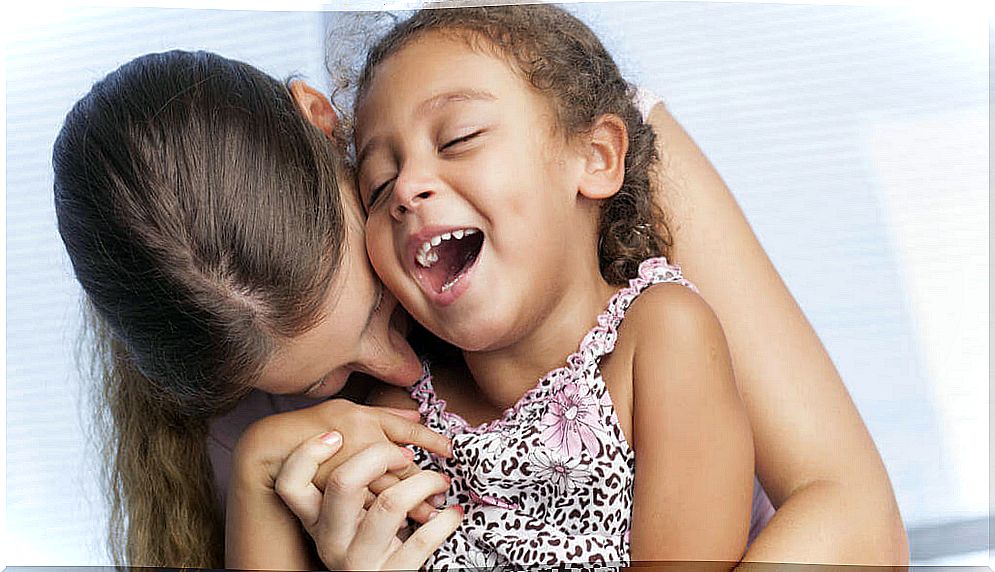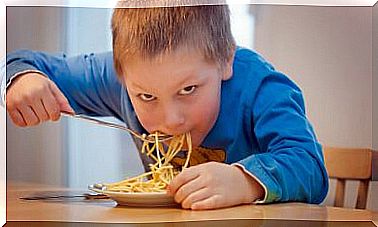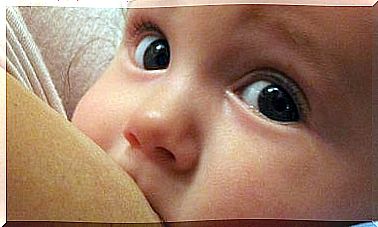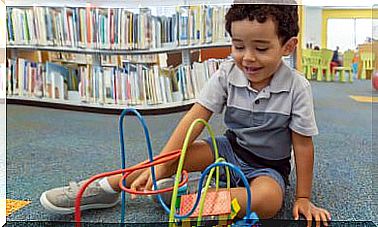Emotional Communication In Childhood

Emotions are an essential part of the person. Communicating them with assertiveness is as important as recognizing those of others for personal well-being and establishing good relationships with our peers. So, emotional communication in childhood is a tool that must be provided correctly.
Communication is the act of transmitting a message to a receiver through a channel (it can be written or oral), in a context and with a specific purpose. In this sense, we say that there are two types of communication :
- Verbal communication. The one with the explicit message, which seeks to transmit certain information to the receiver by using the oral or written word.
- Gestural communication. It can be complementary to the previous one. Includes facial and body movements, signs and expressions.
However, we could add a third: emotional communication. This is the one that tries to convey the feelings and emotions of the issuer. It can be a phrase, a smile, a cry or an angry cry.
Thus, a “thank you very much” said to anyone would not be the same as that same message accompanied by a hug for our mother. Emotionality makes the message stronger, transcends in time and, therefore, lasts longer in the memory of the other.
Emotional communication in childhood: benefits of its inclusion
Children have a lot to work on when it comes to emotions. Guided by their parents and teachers, it is very important that they know how to recognize, handle and express them in a positive and constructive way.
This will allow them to know themselves, better cope with conflictive or frustrating situations. In addition, proper control of emotions makes children develop a more stable, resilient and optimistic mentality .
Emotional communication in childhood is a very useful tool for managing emotions and feelings. How will they do it? These are the most important channels to achieve this:
- Dialogue. Young children should be taught that their parents are there for when they want to be heard. In this way, they can download and find a solution, in case they feel negative emotions. They will work, therefore, the expression of their emotions.
- Actions. Nothing more effective than a hug or a kiss to show affection for another. In the same way, body posture or assertive gaze can reinforce a certain posture of rejection or approval towards something.

Other planes of emotional communication in childhood
In addition to what has been explained, listening to other people and understanding what they express is also an act that includes emotional communication in childhood. Thus we can interpret the feelings of others, act accordingly and develop empathy, an elemental quality throughout life.
Physical contact is also another of the central points. This implies crossing a barrier of personal space, something that is achieved only with the closest people.
Physical contact, well applied, is a much more effective weapon than any verbal or gestural message. A caress, a hug or a kiss represents one of the highest degrees of closeness between two people.
Finally, we can cite the subjective perspective, which is nothing more than the use of certain expressions to add emotional content to our sentences. Thus, our sentence will not be interpreted as an absolute and irrevocable truth, but as the result of our emotions.
I believe, think, feel and think a certain thing. If we communicate something like this, the receiver will be more empathetic with us and the debate will turn positive. It is very useful in relationships between friends or siblings, for example, where there are often dissenting positions very often.

How to practice emotional communication in childhood?
There are many practical ways to work this aspect in children, so that they know how to communicate what they experience, feel and want. These are some:
- Activities. There are many exercises and dynamics to strengthen emotional intelligence, which includes emotional communication among its components. In this article you will find some extremely valuable ones.
- Books. There are many publications by experts in the field, such as Daniel Goleman, that target both children and their mothers. In them, you will find approaches and strategies to improve emotional communication in your children’s childhood. Here is an exceptional list of options to consider. There is also highly recommended audiovisual material for you to try.
- Example. There is no better tool to instill an attitude or behavior in the little ones. So if you show him that you express what you feel and think, he probably will too. In addition, it tries to encourage the use of subjective perspective, works on verbal and gestural communication and tries to spread positive emotions. The use of emotional verbs such as illusion, love, hate, fear or worry, among many more, will be of great help.
Remember, emotional communication in childhood is extremely important. Therefore, it is worth spending time and space. You will be offering your child a tool for life. Their attitudes, assertiveness, and empathy will thank you in the future.










